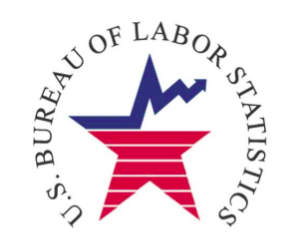
- Image via Wikipedia
Just a short time ago, saving the planet took precedence over saving a dollar. Times have changed, but in today’s economy homeowners are still trying to find ways to do both. Just ask John Shipman, an energy analyst at Energy Efficiency Management (http://www.energyefficiencypro.com/) and a green home performance contractor with Energy Star (http://www.energystar.gov). Shipman states that his company’s “whole-house energy audits have increased three folds” since President Obama has taken office. The President’s stimulus package has made energy conservation a priority with initiatives that focus on energy-efficiency upgrades to homes and businesses.
One of the most hyped government energy-conservation initiatives is the use of solar energy. In fact, the stimulus package was signed after the President visited the Denver Museum of Nature & Science, which boasts 465 solar panels on its rooftop. The federal government’s stimulus package helps with the cost to install solar panels on existing homes, with the hope that this cost savings will help stimulate energy conservation and boost employment in the industry. With the new stimulus package, homeowners will receive a federal tax credit of 30 percent off the total cost of installing solar panels on their homes. According to the Energy Star Web site, the tax credit is also good for geothermal heat pumps, solar water heaters, small wind energy systems, and fuel cells.
This federal tax credit is in addition to any tax credits or discounts a homeowner might receive from the state. Each state has its own rebate programs, including California. If a homeowner in California wants to install solar panels, a good place to start is by checking out the website created by the California’s Public Utilities Commission and Energy Commission. The California Solar Initiative Web site (http://www.gosolarcalifornia.org) “provides consumers a ‘one-stop shop’ for information on rebates, tax credits, and incentives for solar energy systems in California.” In a nutshell, existing homeowners that choose to install solar panels would receive an up-front rebate from the state government. The rebate would be “based on expected performance, and calculated by equipment ratings and installation factors (geographic location, tilt and shading).”
What does that mean to the average homeowner? If you live in the Pacific Gas and Electric Co. (http://www.pge.com/myhome/saveenergymoney/solarenergy/) area, for example, the state rebate would be $1.55 per watt for existing homeowners (you can check out your local electric company’s Web site for their cost savings). According to Vote Solar (http://www.votesolar.org), a non-profit initiative, “a typical home solar system generates about 3 kilowatts of power.” The installation cost in California averages roughly $8.10 per watt. The state rebate is currently $1.55 per watt for homeowners in Pacific Gas and Electric Co. territory. Therefore, the average state rebate is worth $4,650, in addition to the 30 percent cost savings from the federal government. That means the original estimated cost would be around $24,000, but after the rebates a homeowner could pay under $14,000.
Shipman thinks homeowners need to go one step further before going solar. “Solar is a fantastic renewable energy and there are a lot of advantages to it, however you need to do the basics before you put solar panels on a house. It’s like cooking the turkey with the oven half open.” What he and others in the industry believe is the first step to energy conservation in existing homes is to consider the “whole house approach.” For instance, installing energy-efficient windows is just one of the many ways a house can conserve energy before going solar. The effort to save money and the planet by a well-intentioned and discounted solar installation can be thwarted by old windows that leak heat and cool air.
If any homeowner is thinking about installing solar panels or doing any type of energy-efficiency upgrades, it is important to do the homework. There are several companies, both profit and non-profit that can do a home evaluation, as well as Web sites that discuss solar installation. For more information, visit the CALIFORNIA ASSOCIATION OF REALTORS® Green Web Site (http://green.car.org/).
Related articles by Zemanta
- Electric Trucks Arrive on Capitol Hill (usnews.com)
- Green gift: Energy upstarts chase stimulus cash (money.cnn.com)
- Photos: Silicon Valley adopts renewable energy tech (news.cnet.com)
Filed under: Current Events, Electronics, Green Living, Money-Saving, Real Estate Market, Remodeling, Technology | Tagged: Business, California, California Solar Initiative, Energy, Pacific Gas and Electric Company, Renewable, Solar, Solar energy | Leave a comment »





![Reblog this post [with Zemanta]](https://i0.wp.com/img.zemanta.com/reblog_a.png)






![Reblog this post [with Zemanta]](https://i0.wp.com/img.zemanta.com/reblog_e.png)



Your Money: A Day to Tackle the Financial To-Do List: Excerpts for VRN Readers
• INSURANCE PAPERWORK If you’re lucky enough to have health insurance, you’re probably constantly adrift in a sea of forms that make no sense. We’re no different, but a major snafu caused us to have to switch plans a few months into 2009, throwing everything into utter disarray.
On fiscal health day, I got all of the paperwork divided into about a dozen piles to begin our assault on the benefits office and the various insurance companies involved.
Seems that I do this once a week lately, but with everything on AutoPay; I am so much less stressed and able to focus on making commissions and fighting the good fight. – Carlo.
Related articles by Zemanta
Filed under: Commentary, Finance, Money-Saving | Tagged: Apple, Business, Capital One, Charles Schwab Bank Invest First Visa, Charles Schwab Corp., Credit card, Gift card, Health Insurance, Savings account, SmartyPig, United States | 1 Comment »